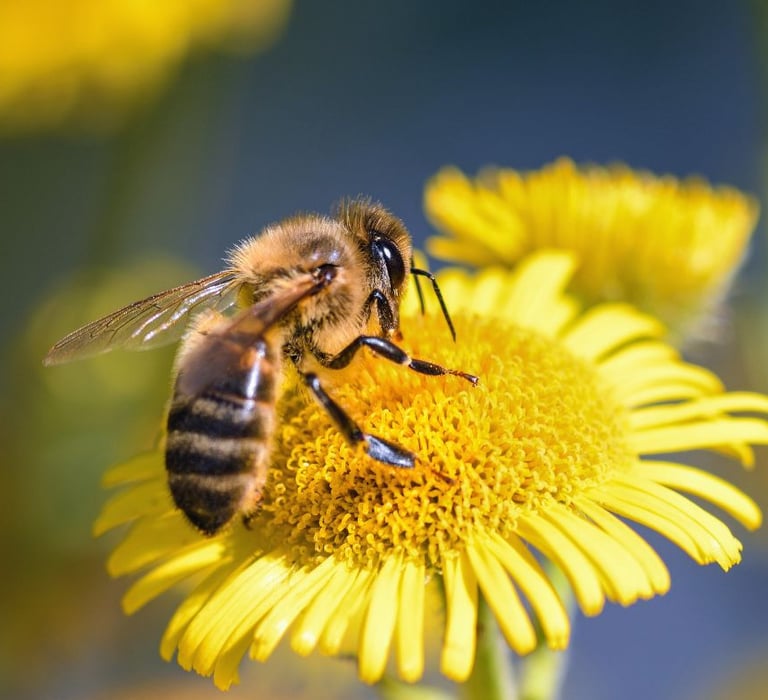Bees + Dogs =Trouble


This post may have affiliate links. As an Amazon Associate, we earn from qualifying purchases from those links. This does not cost you anything and helps support the Sanctuary and all the animals in our care. This has no bearing on our reviews and comparisons. We will do our best to keep things fair and balanced to assist you in making the best decision for you and your animals.
Bees are an important part of the ecosystem, playing a vital role in pollinating plants and producing honey. These buzzing insects have a complex social structure, with a queen bee, drones, and worker bees that all work together to keep the colony thriving. Bees are known for their hardworking nature and can often be seen darting from flower to flower in search of nectar.
One of the primary reasons bees sting is to protect their colony from perceived threats. When a bee feels threatened, it will release a pheromone that signals to other bees to defend the colony. Bees can also sting when they are disturbed while feeding or mating. In general, bees are not aggressive unless they feel that their hive is under attack.
Dogs can come into contact with bees in a variety of ways. Some dogs may accidentally disturb a bee hive while playing or exploring outdoors. Others may be attracted to the sweet smell of flowers that bees are feeding on. Dogs that enjoy chasing or snapping at flying insects are also at risk of being stung.
When a dog is stung by a bee, they may exhibit a variety of symptoms. The most obvious sign is often a visible sting, which can appear as a raised, red bump. Other symptoms may include swelling, pain, and itching. In some cases, dogs may experience more severe symptoms such as difficulty breathing, vomiting, or collapse.
If your dog is stung by a bee, there are several first aid measures you can take to help alleviate their symptoms. Make sure your first aid kit is ready! First, try to remove the stinger if it is still embedded in the skin. You can use a credit card or other flat object to scrape the stinger out. Applying a cool compress to the affected area can also help reduce swelling and pain. If your dog is experiencing more severe symptoms, it is important to seek veterinary care immediately.
While bee stings can be painful and potentially dangerous for dogs, it is important to remember the vital role that bees play in our ecosystem. Bees are responsible for pollinating many of the fruits, vegetables, and nuts that make up a significant portion of our diets. Without bees, these crops would not be able to reproduce, leading to food shortages and a significant impact on our environment.
As dog owners, there are several things we can do to help keep our pets safe while also supporting the bee population. First, it is important to keep our dogs away from bee hives and other areas where bees are present. We can also plant bee-friendly flowers in areas that our dogs do not have access to support local bee populations. Finally, it is important to use caution when using pesticides or other chemicals that may be harmful to bees and other pollinators - and sometimes our dogs too.
In conclusion, bee stings can be a painful and potentially dangerous experience for dogs. However, with proper first aid and veterinary care, most dogs are able to make a full recovery. As dog owners, we can take steps to help protect our pets while also supporting the important role that bees play in our environment.
Bees + Dogs = Trouble
While bees are an intensely important part of nature, they can also cause some pretty serious problems for your dog if they get stung.
